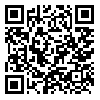Volume 9, Issue 18 (2023)
QHTS 2023, 9(18): 102-138 |
Back to browse issues page
1- Professor of Arabic language and literatureFaculty of Persian Literature and Foreign LanguagesAllameh Tabataba'i University
2- Assistant Professor of Arabic Language and LiteratureFaculty of Persian Literature and Foreign LanguagesAllameh Tabataba'i University , hesam.hajmomen@atu.ac.ir
2- Assistant Professor of Arabic Language and LiteratureFaculty of Persian Literature and Foreign LanguagesAllameh Tabataba'i University , hesam.hajmomen@atu.ac.ir
Abstract: (938 Views)
The present study aimed to analyze the frequent errors in the narrations and hadiths translation of Arabic translation students works to categorize their errors, identify the causes of each type of error and explain their correctness method. To this aim, was used descriptive-analytical method based on the Christian Nord's model for categorizing the translation errors. He divided their errors to four groups of semantic, cultural, linguistic, and specific to the text type. Based on this model, the errors of translators in this study were mean occurrence frequency: semantic (98.3%), specific to the text type (94.3%), linguistic (72.5%) and cultural (55%). Similarly, the reason for their errors in any kind is weakness in these themes: "Reconstruction of logical relationships between sentences in translation," "Transferring the meaning of elements specific to the discourse of hadiths and narratives," "Understanding the linguistic construction of sentences and conveying their exact meaning," and "Conveying the implications of cultural interpretations and cultural elements." Correction of these errors in teaching depends on the use of a systematic set of narratives and hadiths that are categorized based on a variety of errors to improve the translation skills of students in solving the challenges of translating these texts regularly by practicing various samples.
Keywords: Translation training, error analysis, Translation of narratives and hadiths, Christian Nord
Article Type: Original Research |
Subject:
Arts and Humanities (General)
Received: 2022/01/26 | Accepted: 2023/01/6 | Published: 2023/03/1
Received: 2022/01/26 | Accepted: 2023/01/6 | Published: 2023/03/1
| Rights and permissions | |
 |
This work is licensed under a Creative Commons Attribution-NonCommercial 4.0 International License. |




